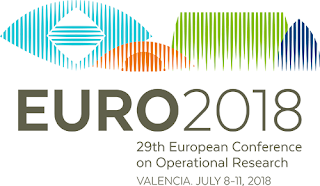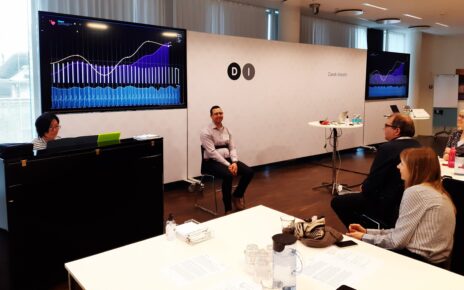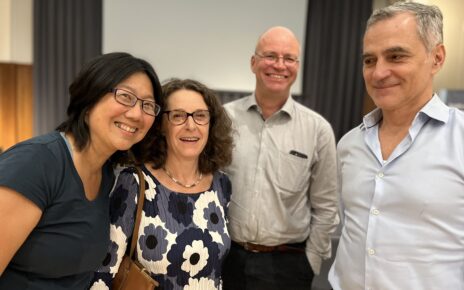
After a long absence, it was a pleasure to re-connect with the Operations Research community when I was invited by Professor Greet Vanden Berghe to give a keynote lecture at EURO2018, the largest European Conference for Operational Research and Management Science.
There was remarkable gender balance amongst the plenary and keynote speakers, thanks to Professor Vanden Berghe. General Chairs, Professor Rubén Ruiz and Professor Ramón Álvarez-Valdés kept an impressive environmentally and socially conscious agenda at the conference while ensuring the attendees were treated to the spectacular architectural gems at the City of Arts and Sciences in Valencia.
Official photos: euro2018valencia.com/photos_videos
Plenaries/keynotes: euro2018valencia.com/plenaries-and-key-notes
Keynote: [ Tweets & Photos ]
Optimization and Music Data Science
Video: https://media.upv.es/player/watch?id=9db6c570-8a83-11e8-905d-7f7d1bf6c1e6
Place: Universitat Politècnica de València (Nexus Building)
Date: Monday, July 9 10:30-12:00
Abstract: The explosion in digital music information has spurred the developing of mathematical models and computational algorithms for accurate, efficient, and scalable processing of music information. According to the 2017 IFPI Industry Global Music Report, the total global recorded music revenue was US$15.7b in 2016, 50% of which were digital. Industrial scale applications linking recorded content to listeners include Last.fm, Pandora, Shazam, and Spotify. Shazam has over 120 million active users monthly and Spotify over 140 million. Since the launch of Shazam, users have issued 30 billion song identification requests, growing by 20 million each day. With such widespread access to large digital music collections, there is substantial interest in scalable models for music processing. Optimization concepts and methods thus play an important role in machine models of music engagement, music experience, music analysis, and music generation.
In this talk, we will show how optimization ideas and techniques have been integrated into computer models of music representation and expressivity, and into computational solutions to music generation and structure analysis. More specifically, we will report on research and outcomes on an interior-point approach to modeling tonal perception (inferring the keys and chords from note information), the idea of duality in reverse-engineering music structure analyses, constraint-based music generation to instill long-term structure, an optimization heuristic for stream segregation separating out voices from a polyphonic texture), statistical and optimization-based approaches to music segmentation, and rhythm transcription that minimizes quantization error for music and arrhythmia sequences. The talk will contain numerous music illustrations and, where appropriate, live performances of music and demonstrations of interactive visualization software on a piano or keyboard.




